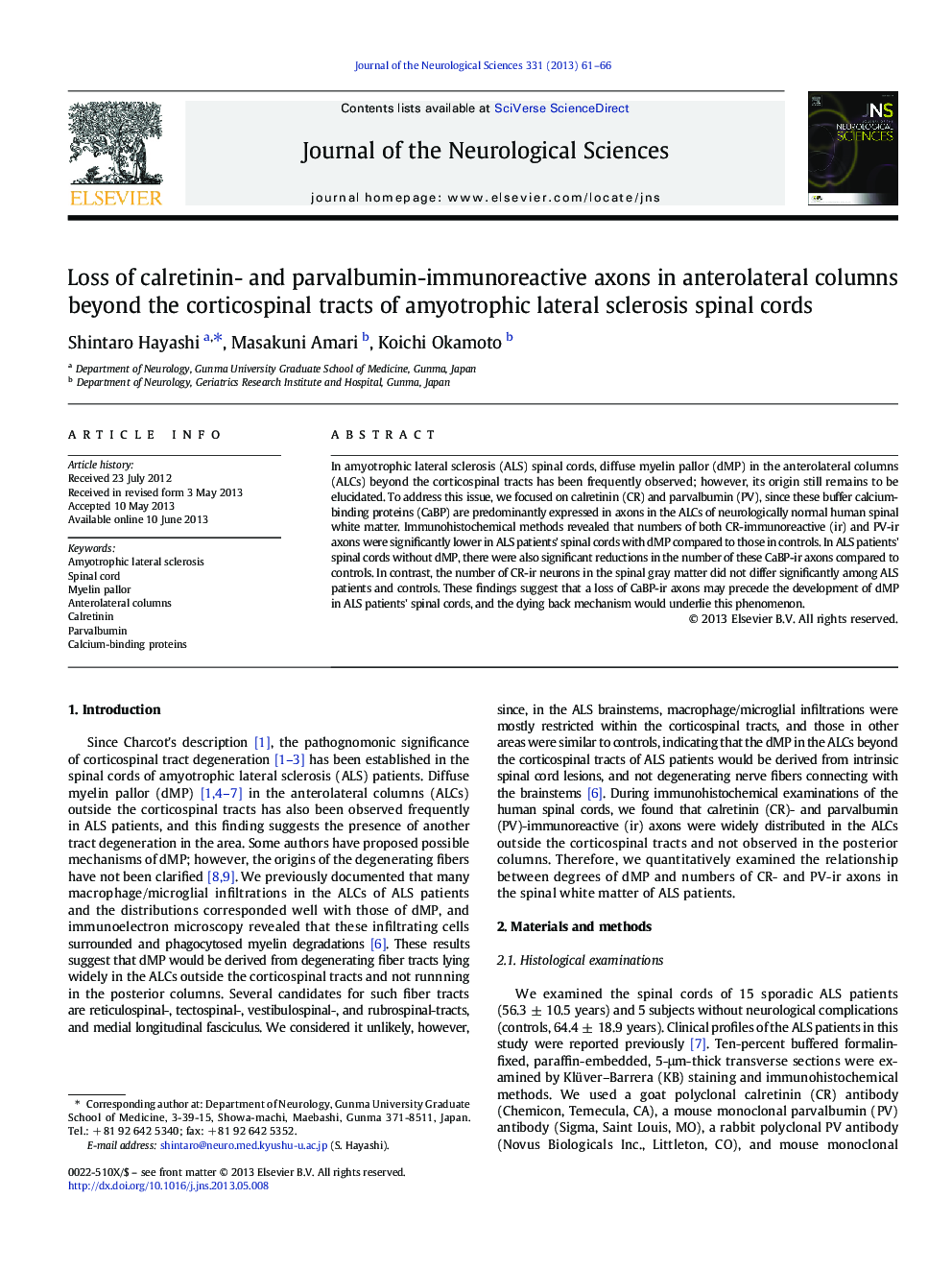| Article ID | Journal | Published Year | Pages | File Type |
|---|---|---|---|---|
| 8279500 | Journal of the Neurological Sciences | 2013 | 6 Pages |
Abstract
In amyotrophic lateral sclerosis (ALS) spinal cords, diffuse myelin pallor (dMP) in the anterolateral columns (ALCs) beyond the corticospinal tracts has been frequently observed; however, its origin still remains to be elucidated. To address this issue, we focused on calretinin (CR) and parvalbumin (PV), since these buffer calcium-binding proteins (CaBP) are predominantly expressed in axons in the ALCs of neurologically normal human spinal white matter. Immunohistochemical methods revealed that numbers of both CR-immunoreactive (ir) and PV-ir axons were significantly lower in ALS patients' spinal cords with dMP compared to those in controls. In ALS patients' spinal cords without dMP, there were also significant reductions in the number of these CaBP-ir axons compared to controls. In contrast, the number of CR-ir neurons in the spinal gray matter did not differ significantly among ALS patients and controls. These findings suggest that a loss of CaBP-ir axons may precede the development of dMP in ALS patients' spinal cords, and the dying back mechanism would underlie this phenomenon.
Related Topics
Life Sciences
Biochemistry, Genetics and Molecular Biology
Ageing
Authors
Shintaro Hayashi, Masakuni Amari, Koichi Okamoto,
